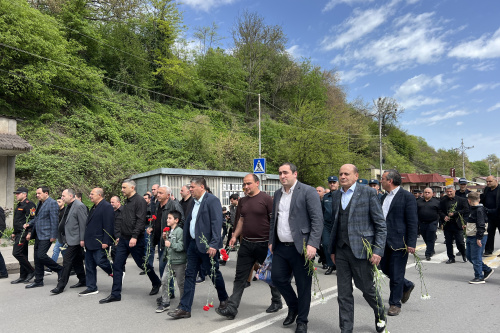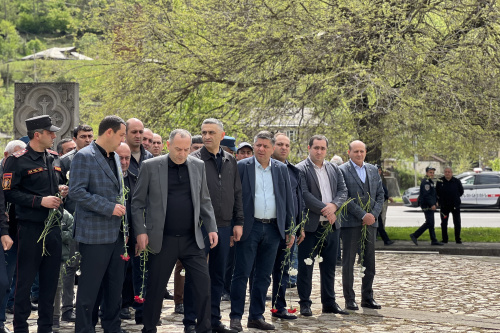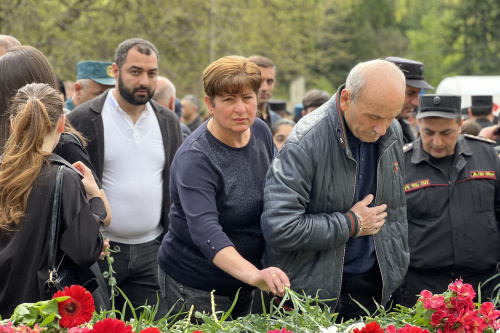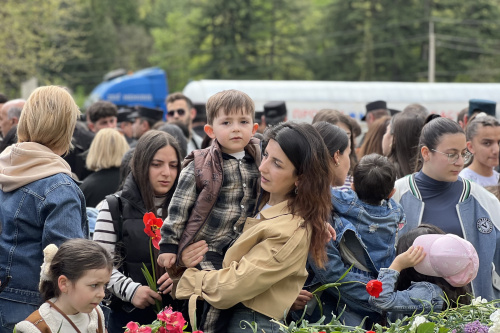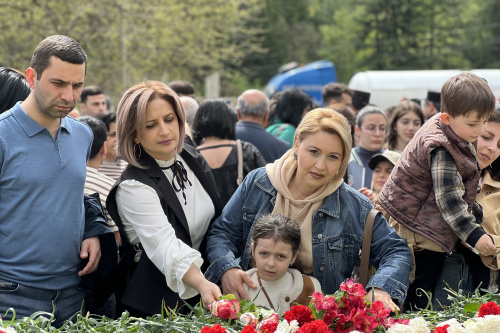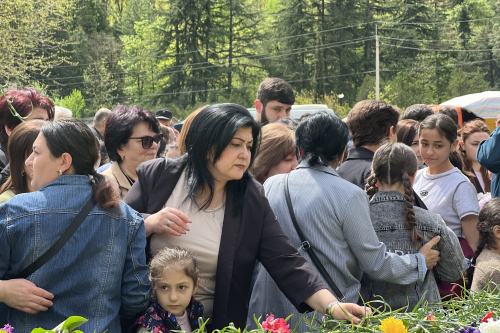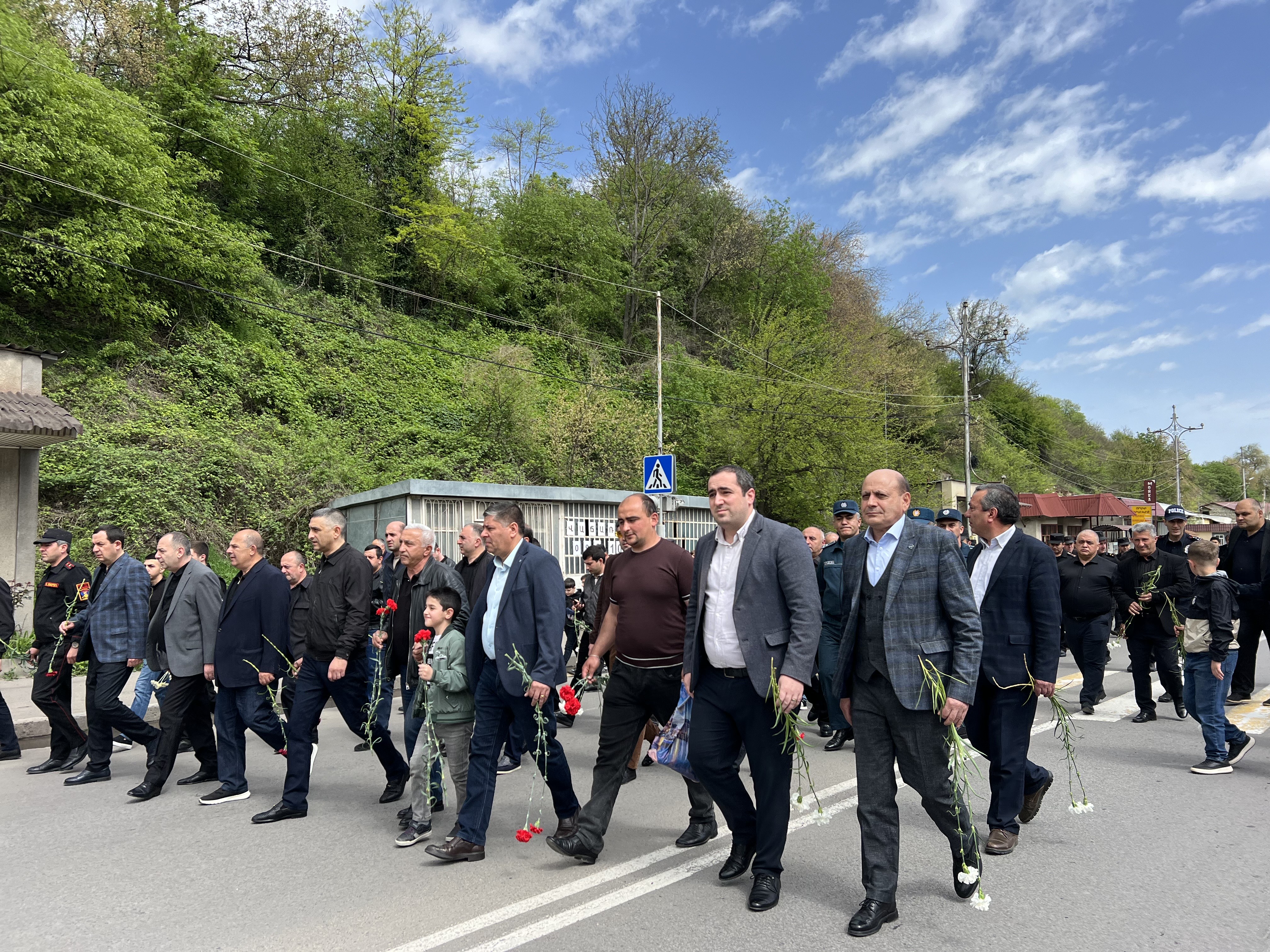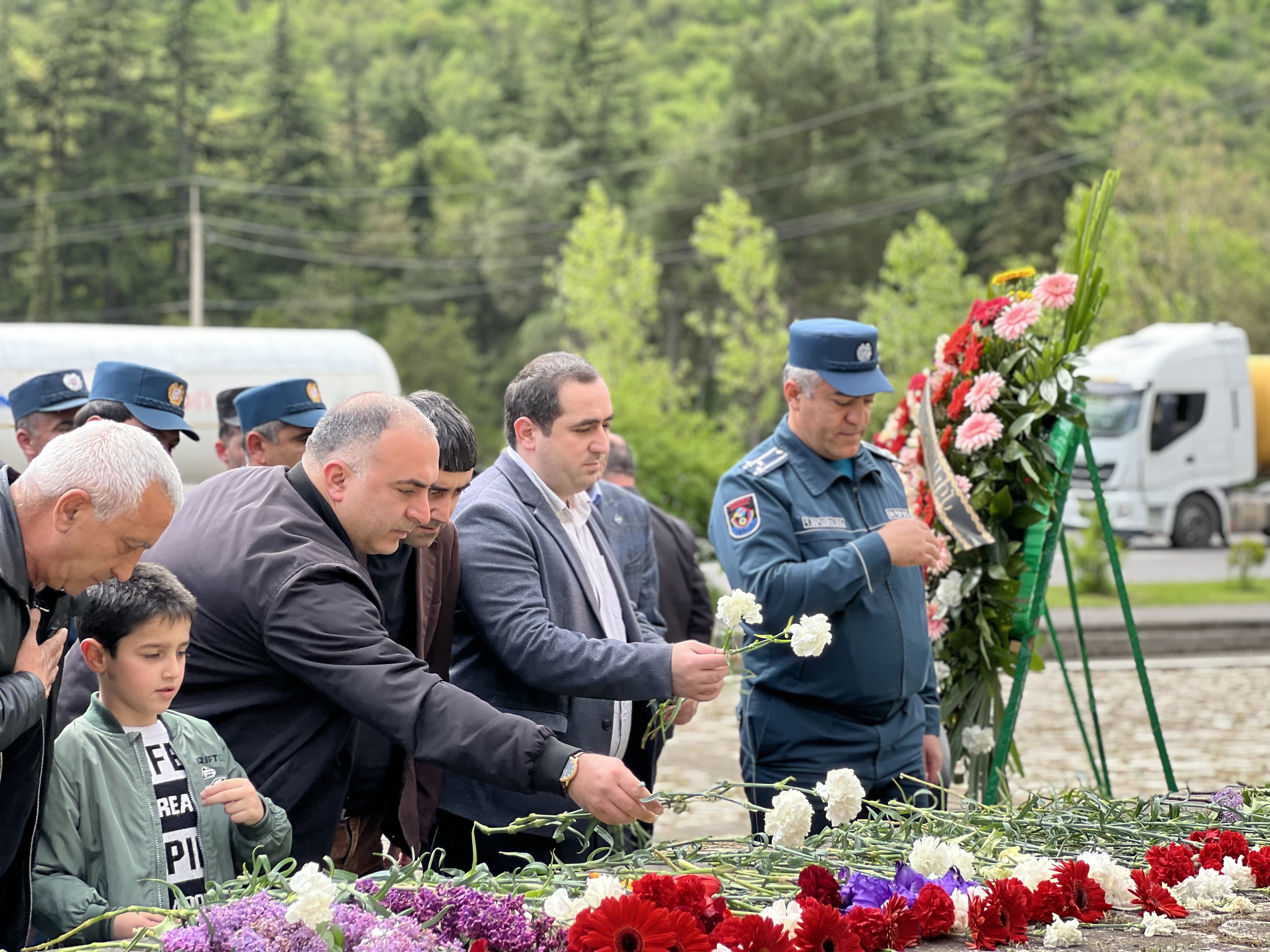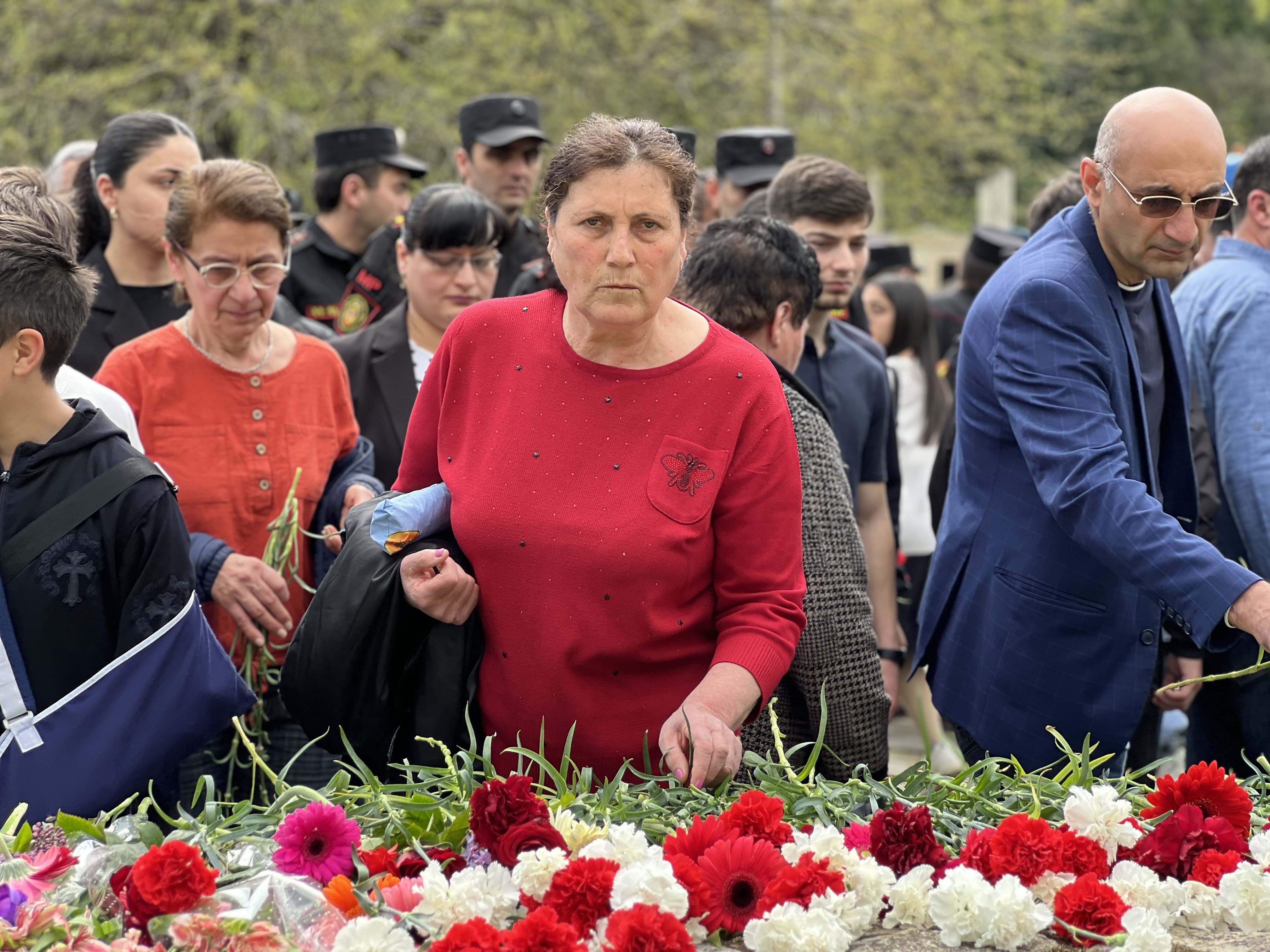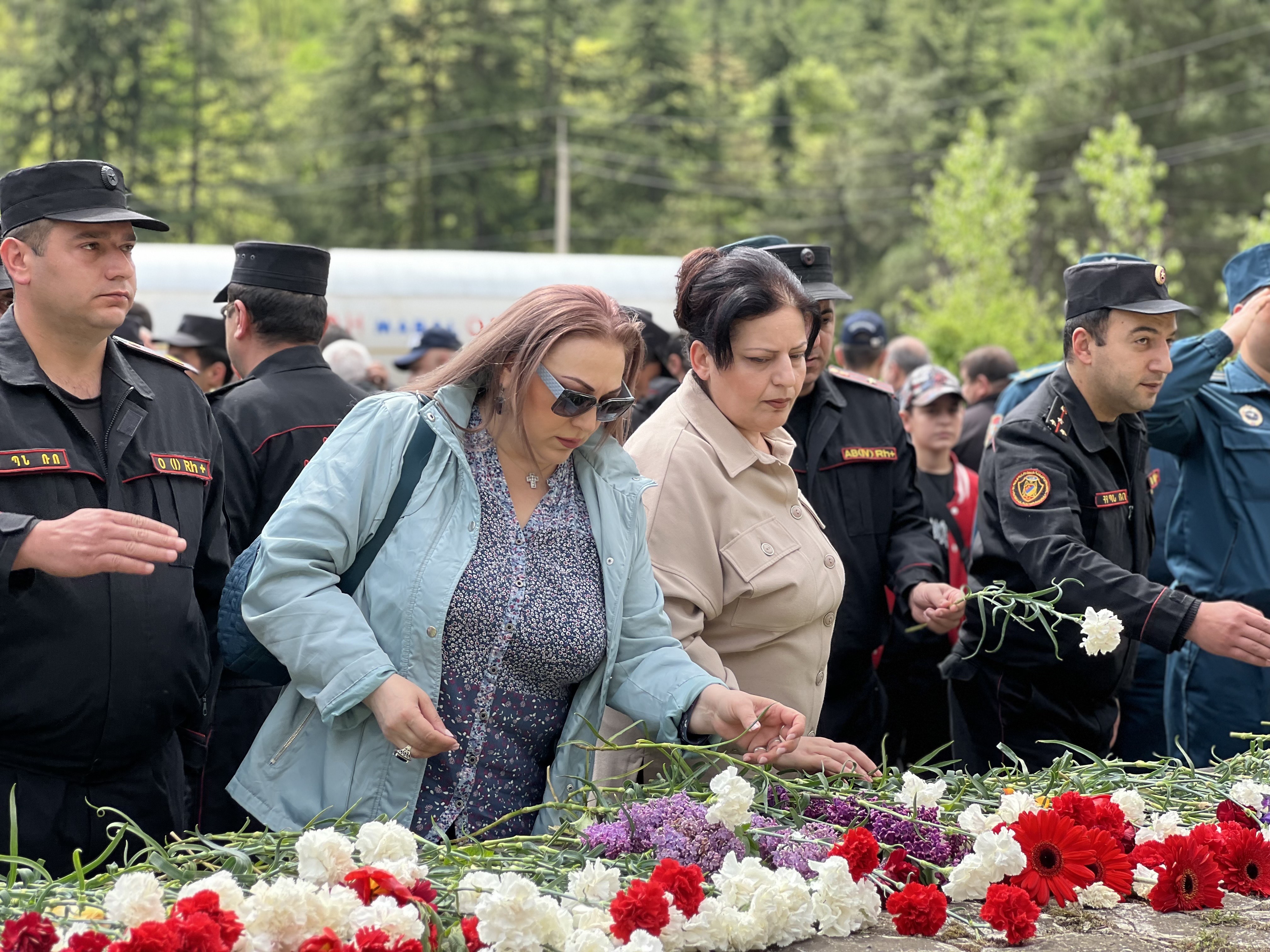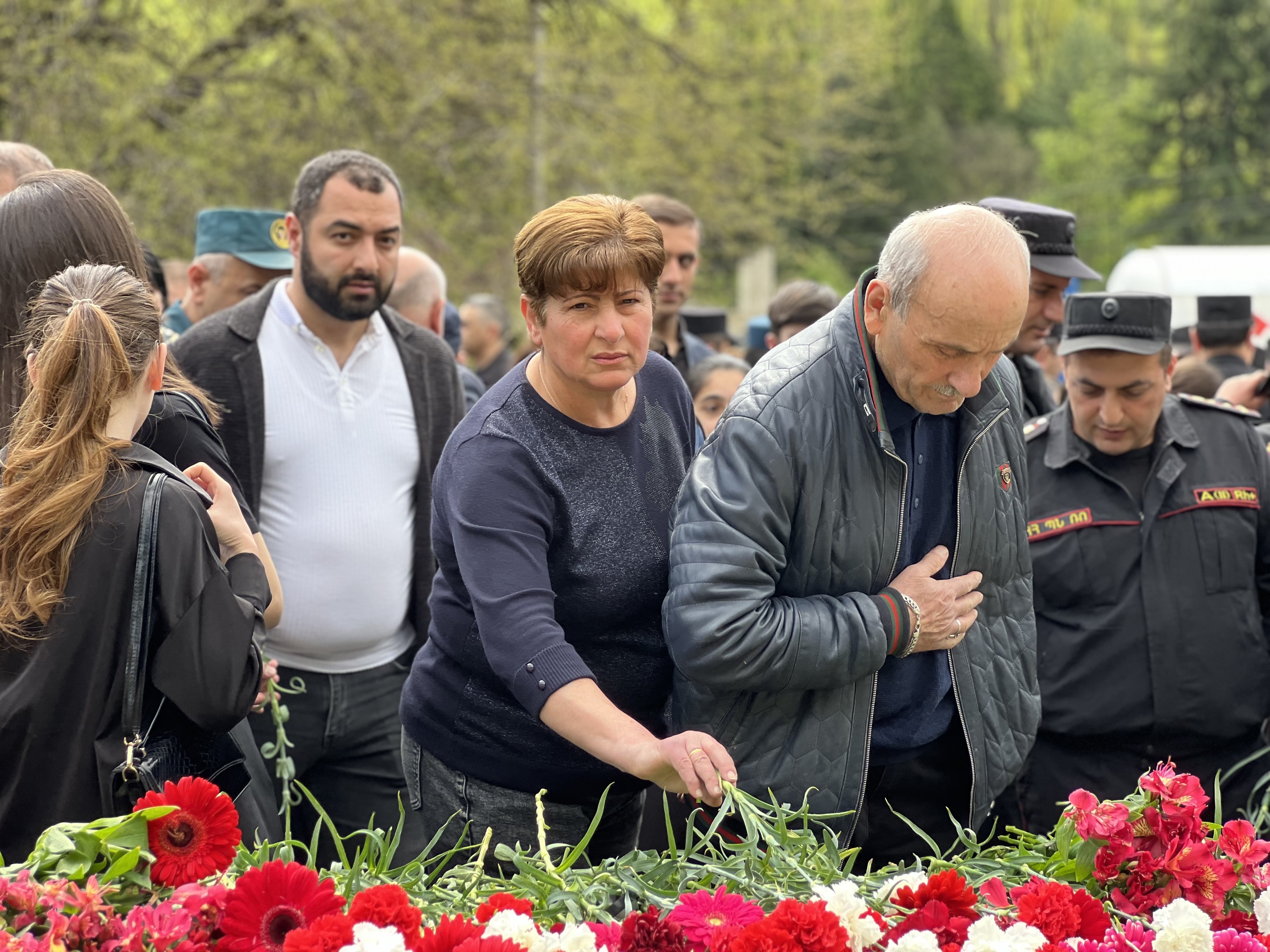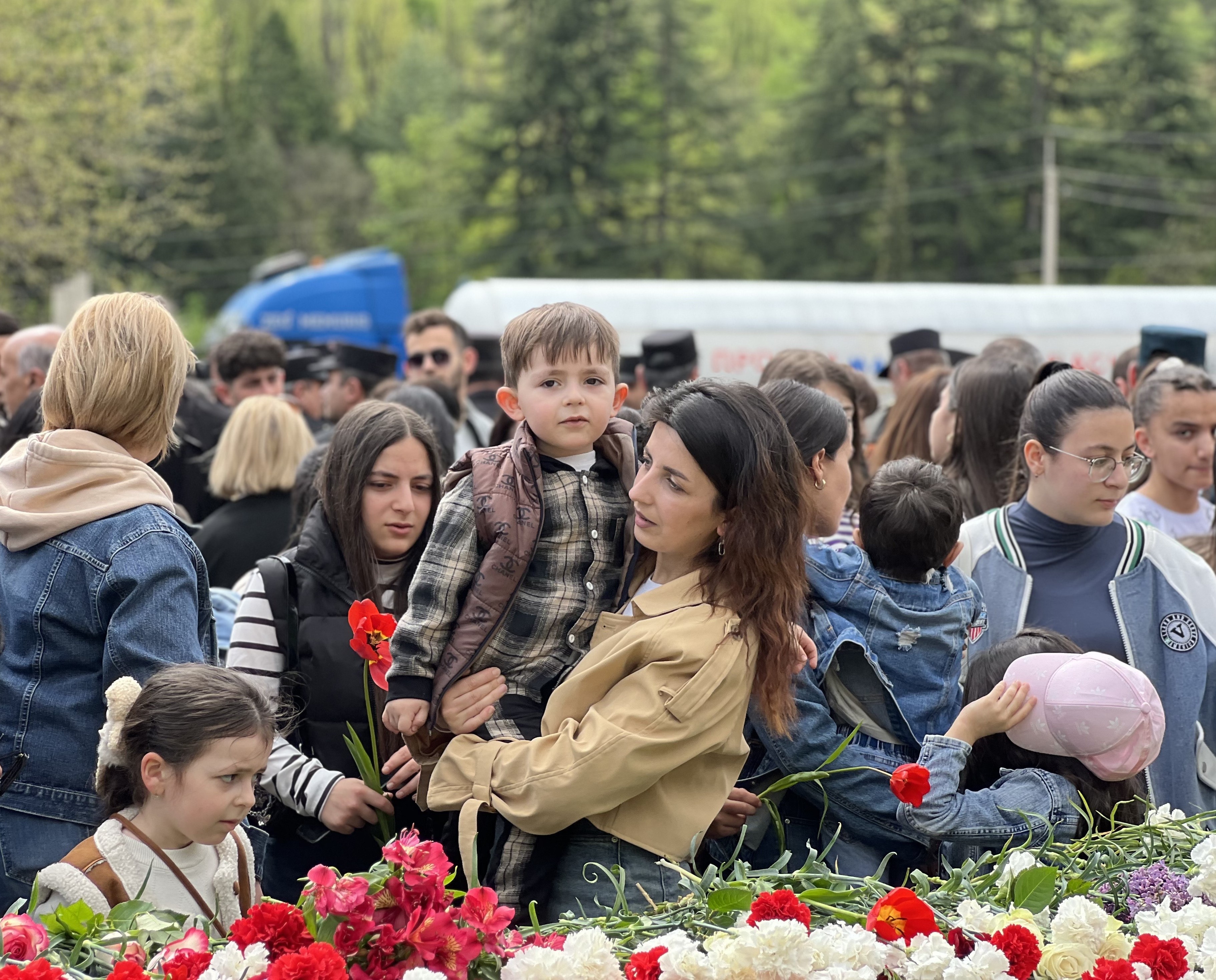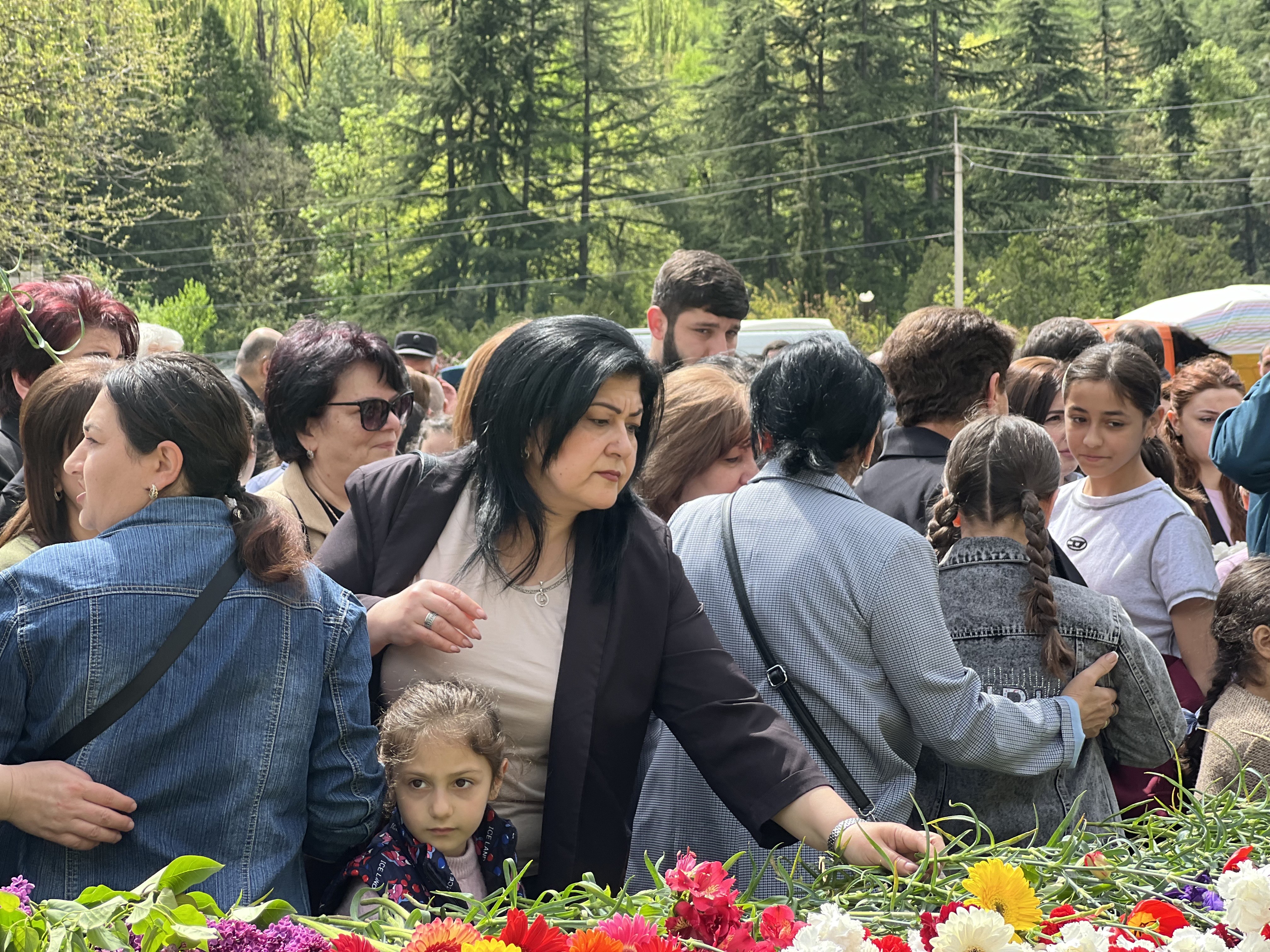- Main
- News and events
- On the 110th commemoration of the Armenian Genocide
Ijevan Branch of YSU
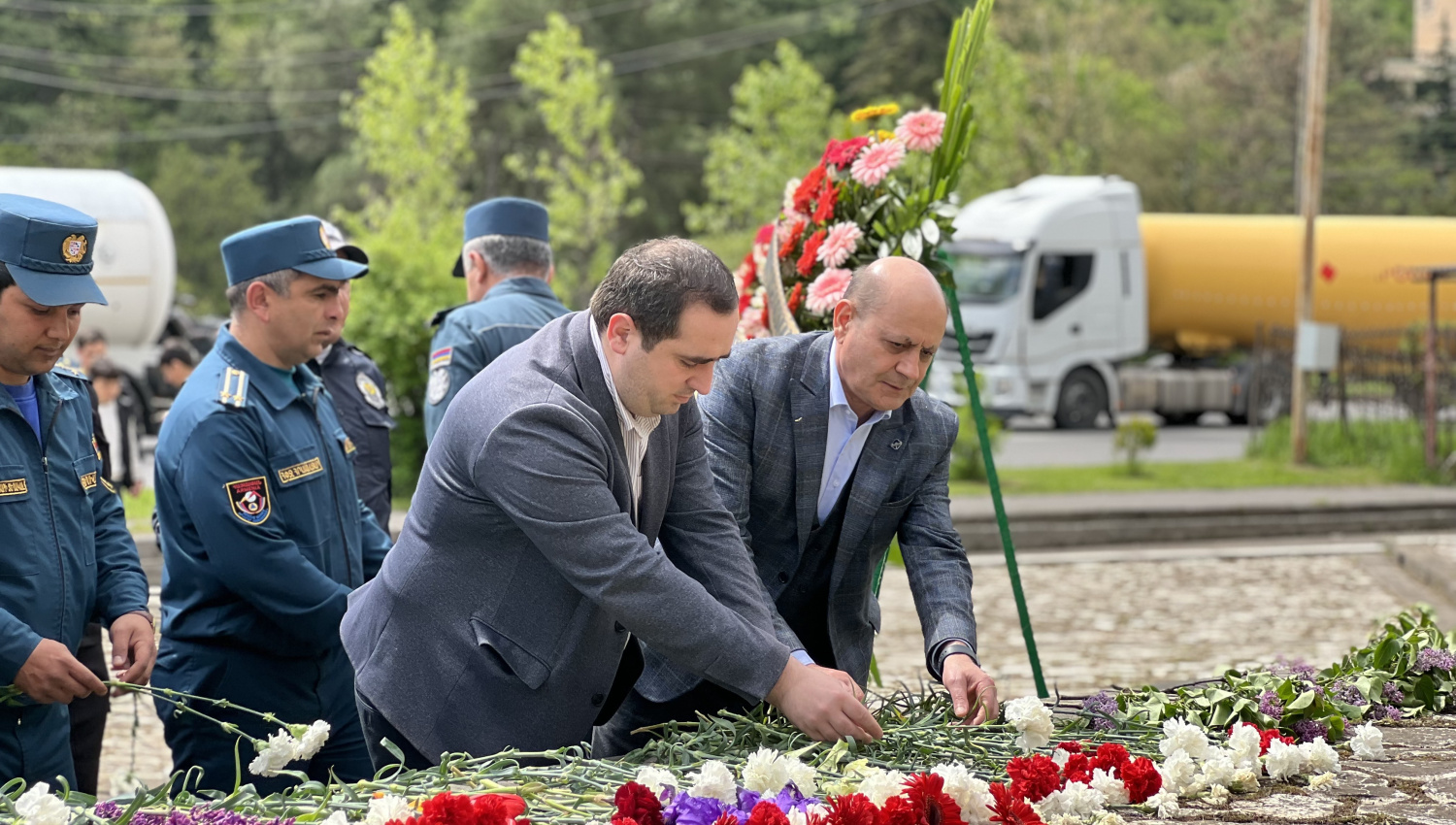
On April 24, 2025 on the 110th commemoration of the Armenian Genocide, members of the YSU IB staff and students, together with regional and city authorities and citizens, marched to the Armenian Genocide Memorial Complex in Ijevan to pay tribute to the memory of the holy martyrs of the Great Genocide.
They laid flowers and wreaths at the monument, visited the Ijevan Historical and Geographical Museum, where an exhibition of the Armenian Genocide was organized.
_________________________________________________________________________
Armenians living in the Ottoman Empire in 1915-1923 were subjected to unprecedented mass crimes planned and carried out by the Young Turk government: brutal murders, rapes, and forced deportations.
The beginning of the Great Genocide is conventionally considered to be April 24, 1915. On that day, the cream of the intelligentsia was arrested in Constantinople: 600 Armenian intellectuals, including Grigor Zohrap, Daniel Varuzhan, Ruben Zardaryan, Siamanto (Atom Yarjanyan), Ruben Sevak, Yerukhan (Yervand Srmakeshkhanyan), Hovhannes Harutyunyan, and others, who were later killed on the way to exile. However, in Armenian historiography, the years 1892-1923 are generally accepted as the dates of the Armenian Genocide. as a genocide organized by the Turkish ruling regions, the Hamidian Turks, and then the Young Turks, which resulted in the mass deportation and extermination of the Armenian population of Western Armenia, Cilicia, and the provinces of the Ottoman Empire. The 12 stone monuments of the Tsitsernakaberd monument, according to folk etymology, symbolize the 12 lost provinces that are now part of modern Turkey.
The Young Turk government, striving to preserve the remnants of the weakened Ottoman Empire, adopted a policy of pan-Turkism, that is, the creation of a vast Turkish Empire, which, extending to China, would include all the Turkic-speaking peoples of the Caucasus and Central Asia. The plan envisaged the Turkification of all national minorities and the creation of the dreamy "Great Turanian" from the Bosphorus to Altai. In this context, the indigenous Armenian people of Western Armenia were seen as the main obstacle to the implementation of this plan. If there were no Armenians, there would be no Armenian Question. The Young Turks used the beginning of World War I as a convenient opportunity. The authors of the plan were Talaat (Minister of Internal Affairs), Enver (Minister of Military Affairs), Cemal (Commander of the Palestinian Front), Behaeddin Şakir Bey (member of the Young Turk Central Committee) and others.
The Armenian Genocide was planned to be carried out in three stages, the first stage of which was April 24, and the second stage was the conscription of about 60,000 Armenian men into the Turkish army. All Armenian men aged 15-45 who were conscripted into the army were later disarmed and killed by their Turkish comrades-in-arms. In the third stage, the Turkish massacrers began to massacre the defenseless Armenian population, mainly women, the elderly and children. Mass deportations, exiles and massacres were organized. Armenians were either forced to renounce Christianity, or killed, or forced to take the path of migration. The surviving Armenians of Western Armenia were forced to migrate to the deserts of Mesopotamia, mainly to Der Zor, where they were exterminated.
The Armenian Genocide has been condemned by the international community at various levels: it was adopted by organizations such as the Council of Europe in 1998, 2001, the European Union through resolutions of the European Parliament, the Armenian Genocide was condemned in 1987, 1998, 2000, 2001, 2002 and 2005. Several UN commissions, the World Union of Churches, etc. The Swedish Parliament, the US House of Representatives, the Senates of Chile and Argentina, the Lithuanian Assembly, the European Parliament, the National Assembly of Venezuela, the parliaments of Poland and the Netherlands, Italy (on April 10, 2019), the Canadian House of Commons, etc. have resolutions and decisions condemning the Armenian Genocide. In France, Uruguay, Cyprus, and Switzerland, denying it is also a criminal offense. On April 24, 2021, US President Joe Biden also officially recognized the Armenian Genocide, giving a speech and using the term “Armenian Genocide” for the first time.
All Armenians continue to struggle today for the recognition, condemnation, and fair compensation of the Armenian Genocide.
Spread the article
